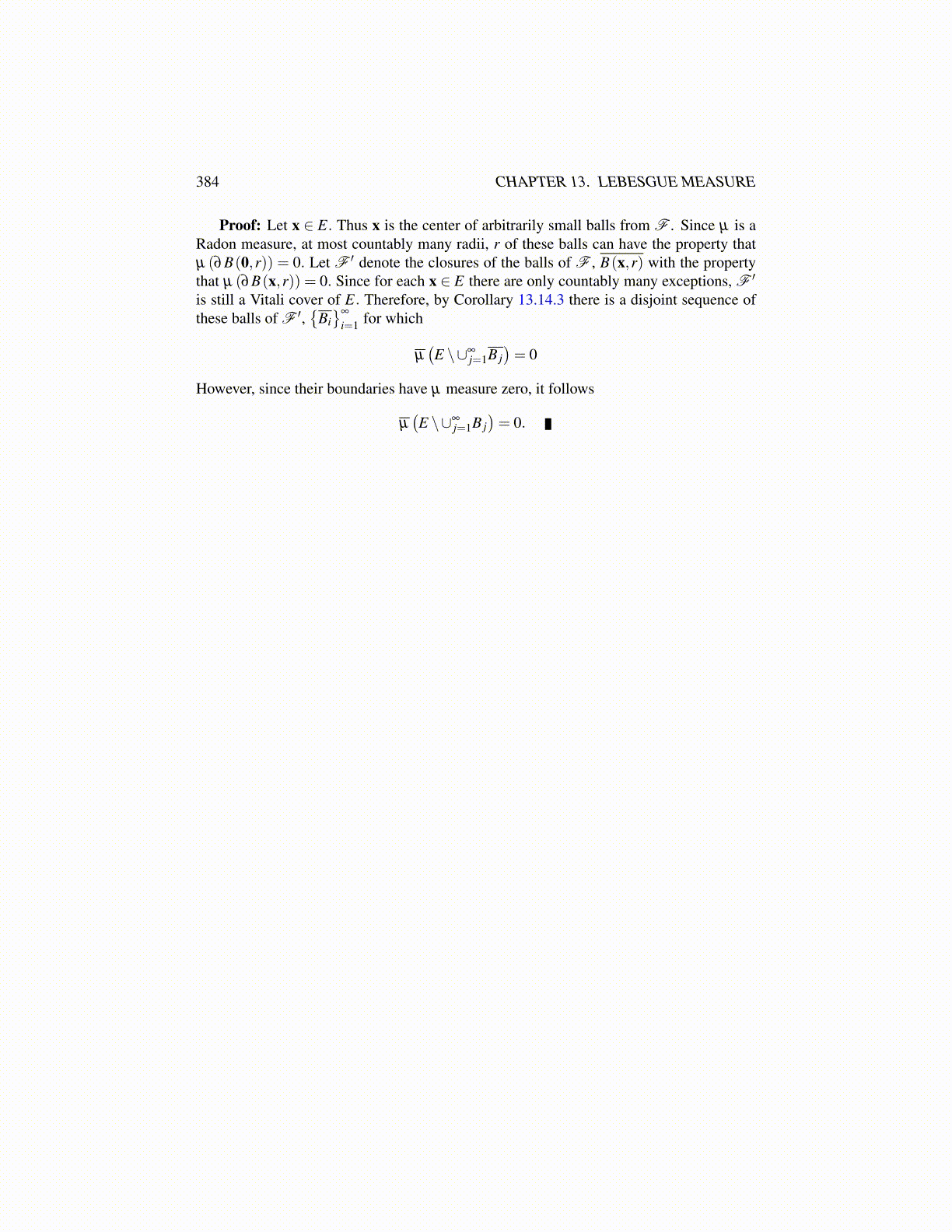
384 CHAPTER 13. LEBESGUE MEASURE
Proof: Let x ∈ E. Thus x is the center of arbitrarily small balls from F . Since µ is aRadon measure, at most countably many radii, r of these balls can have the property thatµ (∂B(0,r)) = 0. Let F ′ denote the closures of the balls of F , B(x,r) with the propertythat µ (∂B(x,r)) = 0. Since for each x ∈ E there are only countably many exceptions, F ′
is still a Vitali cover of E. Therefore, by Corollary 13.14.3 there is a disjoint sequence ofthese balls of F ′,
{Bi}∞
i=1 for which
µ(E \∪∞
j=1B j)= 0
However, since their boundaries have µ measure zero, it follows
µ(E \∪∞
j=1B j)= 0.